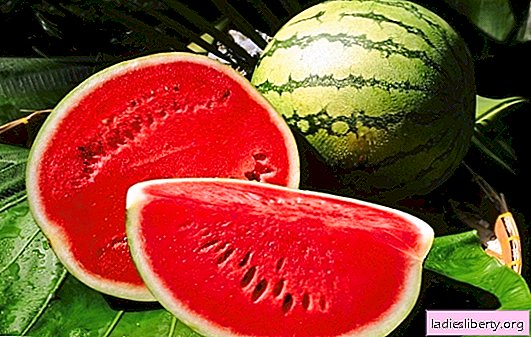
Hazel (Hazel) - General Description
Hazel (hazel) is usually a shrub no higher than 3-7 meters of the birch family. Less common is hazel tree. The tree received the Russian name for the shape of the leaves. Indeed, hazel leaves are similar to bream fish: rather large and widely oval. The upper surface of the leaves is dark green, from the bottom they are lighter.
Men's flowers in the form of earrings on short branches arise in the fall. Having successfully wintered, in the spring they bloom even before the appearance of foliage. Female hazel flowers look like buds. The fruit of the hazel is a well-known brownish-yellow nut wrapped in a green bun in the form of a bell.
Hazel fruits are not only a delicacy and raw material of the confectionery industry. They are used by both painters and perfumers. Thin, flexible and very durable shrub trunks are used for weaving baskets and making hoops on barrels. Rods carved from hazel are not inferior to bamboo.
Since ancient times, hazel has been credited with magical properties. After all, the vine for the search for water, treasures and ore was made precisely from hazel.
Hazel - species and places of growth
Hazel usually grows in the undergrowth of deciduous and even mixed forests. You can meet her throughout the European part of Russia, in the territory of Transcaucasia and Ukraine.
Hazel - medicinal properties
Most importantly, hazel not only contributes to the treatment of various diseases, but is also an excellent preventive measure. Hazelnuts can prevent atherosclerosis. But this disease is a leader among diseases of the cardiovascular system. Its terrible consequences are a heart attack of the brain and heart.
Hazel has properties that are comparable in strength to hamamelis used in the treatment of periphlebitis, varicose veins, capillary hemorrhages, trophic ulcers of the leg, thrombophlebitis.
Hazel also contributes to the treatment of prostate enlargement.
Hazel - dosage forms
Hazelnut leaves, bark and nuts are harvested as medicinal raw materials. The nuts reach full maturity in the fall, when they are picked right in the bell-buns. They are dried in dryers or in ovens at a temperature of 60-70 ° C. Leaves and bark are usually harvested in May. They must be dried in the air under a canopy. The leaves and nuts retain their beneficial properties for only one year, and the bark for 2 years.
Hazelnut kernels are used crushed. In addition, oil is obtained from nuts. From the leaves and bark of hazel make decoctions and tinctures. Even broths are made from nutshells and pluses.
Hazel - recipes
The crushed kernels of the nuts are soaked for eight hours in water. The swollen mass is triturated and brought to a boil. Then you can add cream, honey and salt to taste. Three times daily intake of 2 tbsp. will help in the treatment of anemia and lung diseases.
A mixture of 200 grams of kernel kernels with 200 ml of water will help get rid of colitis, fever, hemoptysis and urolithiasis. It should be taken 50 ml three times a day. Half an hour after taking, you need to eat.
If 25 grams of fresh hazel bark is poured into 250 ml of boiling water and infused for four hours, then filtered infusion, taken three times a day before meals, 50 ml each, will help with trophic ulcers of the leg, varicose veins, capillary hemorrhages and thrombophlebitis.
Walnut oil is used to enhance hair growth. To do this, it is simply rubbed into the scalp. It will also help in getting rid of roundworms and with epilepsy. For this, three meals a day for 2 tablespoons is enough. The burn spot for better healing can be greased with peanut butter and chicken egg protein.
Nuts should be included in your diet for patients with diabetes mellitus, atherosclerosis of blood vessels and arterial hypertension. Nursing mothers eating hazel nuts for food will increase lactation. Hazelnuts contain paclitaxel, an anti-cancer substance, which is why it is used as a means of preventing cancer.
Hazel - contraindications
Hazelnuts can trigger allergic skin reactions. You can not use them with psoriasis. If you eat nuts more than 50 grams per day, it can cause a headache in the frontal part of the head and overstrain the intestines.
Tinctures and decoctions of leaves and bark can increase blood pressure. Individual intolerance to hazel nuts and preparations from it is possible.
Comments











